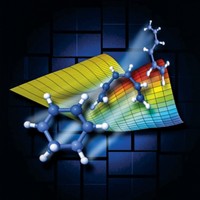Advertisement
Grab your lab coat. Let's get started
Welcome!
Welcome!
Create an account below to get 6 C&EN articles per month, receive newsletters and more - all free.
It seems this is your first time logging in online. Please enter the following information to continue.
As an ACS member you automatically get access to this site. All we need is few more details to create your reading experience.
Not you? Sign in with a different account.
Not you? Sign in with a different account.
ERROR 1
ERROR 1
ERROR 2
ERROR 2
ERROR 2
ERROR 2
ERROR 2
Password and Confirm password must match.
If you have an ACS member number, please enter it here so we can link this account to your membership. (optional)
ERROR 2
ACS values your privacy. By submitting your information, you are gaining access to C&EN and subscribing to our weekly newsletter. We use the information you provide to make your reading experience better, and we will never sell your data to third party members.
Analytical Chemistry
Ionization Charge Dynamics Tracked
Physical Chemistry: Scientists follow and control charge migration after ionizing iodoacetylene
by Jyllian Kemsley
October 26, 2015
| A version of this story appeared in
Volume 93, Issue 42
In a step toward steering electrons inside molecules to control chemical reactivity, researchers report following electron-hole migration in iodoacetylene (H–C≡C–I) with 100-attosecond resolution after ionizing the molecule with a laser (Science 2015, DOI: 10.1126/science.aab2160). How the electron hole migrates depends on the orientation of the molecule relative to the direction the laser light is polarized. Led by ETH Zurich’s Hans Jakob Wörner, the researchers used a technique called high harmonic generation in which a laser pulse causes an electron to tunnel out and away from an atom—in this case, primarily the iodine of iodoacetylene. When the electron and hole recombine, the process releases a burst of attosecond-duration X-rays. If the molecule is perpendicular to the laser polarization field when it is ionized, the hole initially localizes on the iodine. The hole then delocalizes over the molecule before localizing on the carbons. If the molecule is parallel to the laser polarization field, the hole localizes mostly on the carbons.





Join the conversation
Contact the reporter
Submit a Letter to the Editor for publication
Engage with us on Twitter